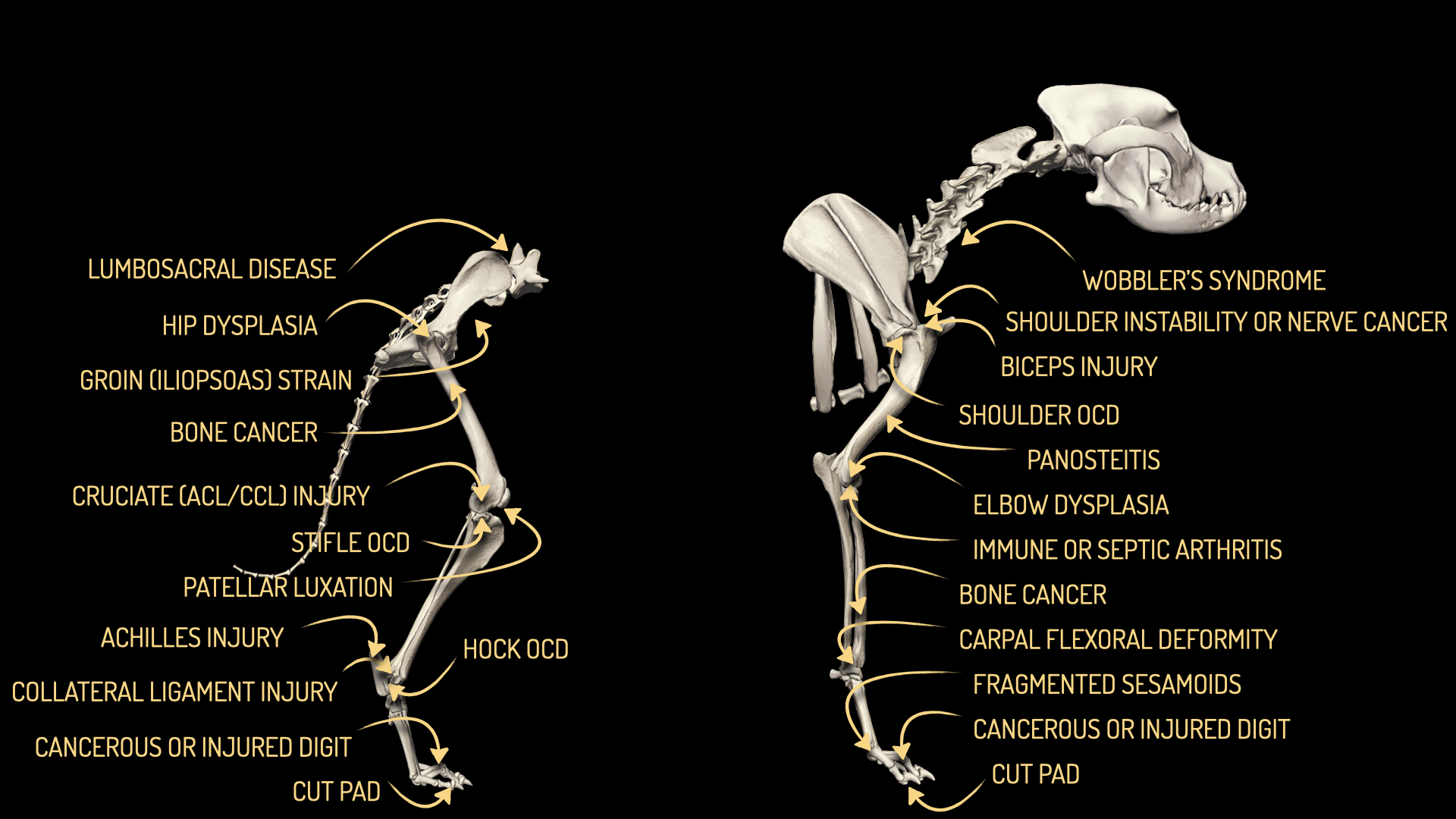DEVELOPMENTAL JOINT DISEASES
NEUTERING AND JOINT DISEASE
A 2020 study proposed a link between neutering and joint disease in some breeds. The table below shows the German Shepherd dog data.
SPECIFIC CONDITIONS
-
Panosteitis causes cycles of short-term lameness, which can switch between limbs. Breed risk is 3x higher than average. Panosteitis has several possible causes, including consumption of protein-rich, high-calorie commercial puppy food.
Chronic forelimb lameness warrants veterinary investigation. Risk of elbow dysplasia in German Shepherds is 44x higher than average. Early diagnosis and treatment can improve long-term prognosis.
Shoulder OCD involves flaking of cartilage. It’s less common than elbow dysplasia. Risk of shoulder OCD is 2x higher than average.
-
German Shepherd dogs are ranked #4 in a British elbow arthritis database. Elbow arthritis secondary to elbow dysplasia gradually worsens with age. The best treatment depends on age and arthritis severity.
Chronic shoulder muscle injuries are more likely in sporting dogs. Diagnosis can be challenging.
Treatment of carpal collapse depends on severity. Options include external supports and carpal arthrodesis.
German Shepherds are ranked outside the top 15 breeds affected by malignant bone cancer.
-
A 20.6% incidence of hip dysplasia ranked German Shepherds #40 in 2020. Severe hip dysplasia triggers an insurance claim in half of affected German Shepherds with lifetime insurance. They were ranked #2 for total hip replacement between 2010 and 2020.
Severe pain triggers a suspicion for panosteitis in puppies. It causes cycles of short-term lameness, which can switch between limbs. Breed risk is 3x higher than average. Panosteitis has several possible causes, including consumption of protein-rich, high-calorie commercial puppy food.
-
Cruciate ligament injuries are a more likely cause of chronic hindlimb lameness than muscle injuries or non-specific arthritis. Dogs with a prior diagnosis of hip dysplasia are often affected. German Shepherds are ranked #5 for cruciate ligament injuries and #7 for TPLO surgery. Tap here to learn more about ACL injury diagnosis and treatment.
A 20.6% incidence of hip dysplasia ranked German Shepherds #40 in 2020. Severe hip dysplasia triggers an insurance claim in half of affected German Shepherds with lifetime insurance. They were ranked #2 for total hip replacement between 2010 and 2020.
Severe pain triggers a suspicion for panosteitis in young shepherds, or lower back pain and bone cancer in older dogs.
Fibrotic myopathy (also called gracilis or semitendinosus muscle contracture) is a non-painful hamstring muscle contracture which causes a characteristic mechanical lameness. Stem cell therapy is a promising treatment.




